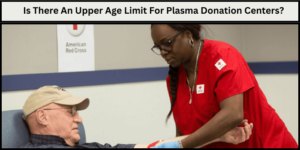
What is cancer?
Any of a wide range of disorders marked by the growth of aberrant cells that divide uncontrollably and have the capacity to invade and destroy healthy bodily tissue are collectively referred to as cancers. Cancer often spreads to other body parts.
Cancer is the second most common cause of mortality worldwide. However, advancements in cancer detection, therapy, and prevention are leading to higher survival rates for a range of cancer types.
What are cancer symptoms?
The signs and symptoms of cancer will depend on whatever part of the body is affected.
Although not exclusive to cancer, some general signs and symptoms of the illness consist of:
1. Fatigue.
2. Difficulty swallowing.
3. Hoarseness.
4. Under the skin, there may be a lump or thick spot.
5. Changes in weight, including inadvertent gain or loss.
6. Skin alterations include small changes, chronic sores, skin yellowing, darkening, or redness are examples of altered skin.
7. Modifications to bowel or bladder routines.
8. Chronic coughing or breathing difficulties.
9. persistent heartburn or discomfort following a meal.
10. Chronic, unexplained discomfort in the muscles or joints.
11. Persistent fevers or sweats that don’t go away.
12. Inexplicable bruises or bleeding.
What are cancer causes?
Cellular DNA alterations, or mutations, are the root cause of cancer. A cell’s DNA is organized into many distinct genes, each of which carries a set of instructions directing the cell’s growth and division in addition to specifying what tasks it should carry out. Errors in the instructions can cause a cell to stop working properly and even become cancerous.
What do gene mutations do?
A mutated gene can tell a healthy cell to:
1. Permit fast growth: A gene mutation might tell a cell to divide and expand more quickly. Consequently, many more cells containing the same mutation are created.
2. Fail to stop uncontrolled cell growth: Normal cells know when to cease proliferating in order to achieve the ideal balance of each cell type. Cancer cells lose the tumor suppressor genes, which instruct them when to stop proliferating. A mutation in a tumor suppressor gene allows cancer cells to grow and proliferate.
3. Make mistakes when repairing DNA errors: DNA repair genes search for and fix mistakes in a cell’s DNA. A change in a DNA repair gene may make it more difficult for subsequent mistakes to be corrected, which could lead to the development of cancer in cells.
These are the most common mutations found in cancer cases. However, a wide range of other gene mutations can also cause cancer.
What causes gene mutations?
Gene mutations can result from a number of factors, including:
1. Gene mutations inherited from birth: It is possible that you inherited a genetic mutation from your parents at birth. This type of mutation is responsible for a very small percentage of cancers.
2. Gene mutations that occur after birth: The majority of gene mutations happen after birth and are not inherited. Many factors, including smoking, radiation, viruses, carcinogens (substances that cause cancer), obesity, hormones, chronic inflammation, and inactivity, can alter one’s genes.
Gene mutations typically happen when cells grow normally. On the other hand, cells have a system in place that can detect errors and fix them. Sometimes a mistake goes unnoticed. This might lead to a malignant cell developing.
How do gene mutations interact with each other?
A combination of gene mutations that you are born with and those that you pick up along the way is what causes cancer.
For instance, cancer is not a given just because you were born with a genetic mutation that increases your risk of developing the disease. On the other hand, cancer might only result from one or more extra gene changes. A hereditary gene mutation may make you more vulnerable than other people to developing cancer from a specific cancer-causing substance.
It is uncertain how many specific mutations are required to cause cancer. Probably depending on the type of cancer, this varies.
Risk factors
Even though doctors are aware of several variables that can increase your risk of developing cancer, most cancer cases occur in people who have no known risk factors. The following are recognized to increase cancer risk:
Your age
The development of cancer can take decades. The majority of cancer patients are therefore 65 years of age or older. Cancer is not limited to adulthood, although being more common in older adults.
cancer diagnosis can come from any age.
Your habits
There are established lifestyle variables that increase cancer risk. Numerous variables, such as smoking, drinking more than one drink per day for women and up to two drinks per day for men, being overweight, getting sunburned regularly, and participating in dangerous sexual unsafe, can lead to cancer.
You can change some habits to lower your risk of acquiring cancer, even if some are more difficult to break than others.
Your family history
The fraction of cancers that are caused by genetic factors is very small. If cancer runs in your family, it’s possible that mutations are being passed down through the generations. You may be a candidate for genetic testing to determine whether you have any inherited mutations that could increase your risk of getting certain cancers. Recall that having a genetic mutation in your family does not ensure that you will get cancer.
Your health conditions
Some chronic health conditions, such as ulcerative colitis, can specifically increase your risk of developing certain cancers. Discuss your risk with your physician.
Your environment
The environment around you may contain harmful chemicals that raise your chance of developing cancer. If you live with someone who smokes or frequent places where people smoke, you may still be breathing in secondhand smoke even though you don’t smoke. There is also a link between a higher risk of cancer and chemicals like benzene and asbestos that may be present in your home or place of employment.
Complications
Numerous difficulties can arise from cancer and its treatment, such as:
1. Pain: Pain can be caused by cancer, even though not all cancers are severe, or by the medicines used to treat it. Cancer-related pain can be effectively managed with medication and other techniques.
2. Fatigue: Cancer patients’ fatigue has several reasons, but it is frequently treatable. Fatigue after radiation therapy or chemotherapy is frequent, but it’s typically just transitory.
3. Difficulty breathing: Breathlessness may be a side effect of cancer therapy or the disease itself. Relief from treatment may be possible.
4. Nausea: Certain cancers and cancer treatments can cause nausea. when your physician can predict if a treatment will have side effects. You may be able to prevent or minimize nausea with the help of medication and other therapy.
5. Diarrhea or constipation: Constipation or diarrhea can be side effects of cancer and cancer treatment.
6. Weight loss: Cancer and cancer therapies can cause weight loss. Cancer causes normal cells to lose their nourishment and nutrients. It is often unaffected by calorie intake or type of diet and is difficult to cure. Usually, artificial feeding through stomach tubes or veins has minimal impact on weight loss.
7. Chemical changes in your body: Your body’s natural chemical equilibrium can be disturbed by cancer, which also raises the possibility of serious complications. Constipation, frequent urination, increased thirst, and confusion are just a few of the indications and symptoms of chemical imbalances.
8. Brain and nervous system problems: Cancer can cause discomfort and loss of function in a particular body part by pressing on surrounding nerves. Brain cancer can result in headaches and symptoms similar to stroke, such as weakness on one side of the body.
9. Unusual immune system reactions to cancer: The body’s immune system occasionally targets healthy cells in reaction to the presence of cancer. The term “paraneoplastic syndromes” refers to these incredibly rare reactions that can induce a wide range of symptoms, such as convulsions and difficulty walking.
10. Cancer that spreads: As cancer advances, it has the ability to spread (metastasize) to many bodily parts. Where cancer spreads depends on its nature.
11. Cancer that returns: The chance of a cancer recurrence exists for cancer survivors. The likelihood of a malignancy returning varies. Consult your physician about ways to lower your chance of developing cancer again. Following treatment, your doctor might create a plan for your follow-up care. In order to check for cancer recurrence in the months and years following your treatment, this strategy may involve routine scans and tests.
Prevention
Medical professionals have identified a number of ways to reduce your risk of cancer, such as:
1. Stop smoking: Give up smoking if you do. Don’t start if you don’t smoke. Smoking is linked to several malignancies, not just lung cancer. Giving up today will reduce your risk of cancer in the future.
2. Avoid excessive sun exposure: Skin cancer risk is increased by the sun’s harmful ultraviolet (UV) rays. Try staying in the shade, applying sunscreen, or dressing in protective clothing to cut down on the amount of time you spend in the sun.
3. Eat a healthy diet: Select a fruit- and vegetable-rich diet. Choose lean proteins and whole grains. Cut back on the processed meat you consume.
4. Exercise most days of the week: A lowered risk of cancer is associated with regular exercise. Make an effort to exercise for at least 30 minutes most days of the week. If you haven’t been exercising regularly, start off small and work your way up to 30 minutes or more of exercise.
5. Maintain a healthy weight: Obesity or being overweight can raise your risk of developing cancer. To help you achieve and maintain a healthy weight, combine regular exercise with a well-balanced diet.
6. Drink alcohol in moderation, if you choose to drink: If you decide to consume alcohol, do so in moderation. This corresponds to a maximum of one drink for women and two for men per day for those in good health.
7. Schedule cancer screening exams: Based on your risk factors, talk to your doctor about the most appropriate cancer screening tests for you.
8. Ask your doctor about immunizations: Your risk of cancer is increased by certain viruses. Immunizations can help prevent some viruses, like hepatitis B, which increases the risk of liver cancer, and human papillomavirus (HPV), which increases the risk of cervical cancer and other cancers. To find out if you should get vaccinated against certain viruses, speak with your doctor.









1 thought on “What Is Cancer? Symptoms, Causes and Prevention”